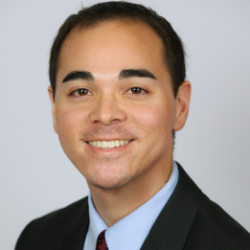Clinicians care for patients during their most vulnerable states; they keep intimate details about their patients while remaining compassionate even toward the seemingly vilest of persons. A clinician’s signature and words also carry weight. With such power, however, comes the responsibility to be trustworthy.
Documentation is an important part of patient care. It helps other clinicians know the patient’s past medical history, treatment, and treatment response, which helps determine the direction of further care or workup. Documentation is, therefore, not just for billing, but it is an integral part of delivering quality and safe care. Unfortunately, documentation and administrative requirements have become so cumbersome and time-consuming that it is usurping time away from direct patient care. EHRs can decrease productivity, introduce errors, and negatively affect the perception of quality care. EHRs are also shown to decrease work satisfaction, increase likelihood of burnout, and cause stress in clinicians.
An AMA survey revealed, “for every hour clinicians spend with patients, they spend two hours on EHR documentation and other desk work.” Researchers at the University of Pennsylvania and Johns Hopkins University showed that internal medicine interns spent about 43% of their day on indirect patient care, mainly EHR use, leaving just over half of their time split among direct patient care, studying, and daily activities. A recent study found that, compared to hospitalists, specialists experienced a decrease in hospital malpractice claims rate and had relatively higher injury severity and indemnity payments. One explanation for this discrepancy may be the increasing (and unsafe) patient load hospitalists are expected to see and the increasing associated administrative work.
The drudge of documentation is sufficient reason for the compromise of integrity in the documentation and for forgetting the purpose of medical documentation. I have seen too many useless notes dated for today but a replica of an earlier one, right down to vitals and containing medications that the patient is no longer on or lab requests that were already done and resulted. The result is a fragmented plan, where covering clinicians must try to figure patient’s care plan and the rationale for certain orders. It makes work harder for the incoming clinician, who needs to figure all this out before knowing how to proceed with the day’s care. I have seen too many clinicians in different locations and facilities go into a room and within minutes come back to write or dictate full notes with a complete exam, right down to examining the internal auditory canal though no working otoscope is available. How about clinicians who examine their relevant body system during a new patient visit yet somehow document a complete physical exam: normal, except for whatever abnormality is noted in the body system of focus? This has made the physical exam report unreliable or something to be believed with caution. For a stable patient, the physical exam section may be irrelevant but, in certain cases, like in a patient with fever and unknown duration of murmur, patients may end up undergoing unnecessary tests or even treatment with the attendant risk of complications.
Given the complexity of acutely ill patients, it still baffles me that some generalist clinicians can see over 30 patients in a shift. Such clinicians may be efficiency superstars, but at what cost? Are clinicians blurring the lines of integrity to be a superstar? The documentation rules need to be changed so that clinicians can be more in control of what to document as they are performing the cognitive work and have the training. For instance, a complete physical exam is, in some patients, a hindrance to care. Imagine telling a patient with new-onset left-sided paralysis that you need to complete a complete physical exam before they can go for that CT scan or get treatment orders put in. A complete exam as a requirement in an H&P is the stuff that belongs to annual physical visits or in the care of patients with unknown etiology of symptoms. However, because billing and compensation dictate having a complete physical exam, a complete physical exam is documented. Clinicians worsen the problem about the burden of documentation by pretending that we can handle the unrealistic clinical and administrative work. Meanwhile, our integrity is being continually compromised by a slippery slope situation.
Clinician integrity in documentation is more important now that patients can view their notes and spot the discrepancy between what exam the clinician documented and what they remember having done. We do not want to lose the respect of our patients for such things as assuming a normal exam. It is one thing to forget to document (or fully edit the template of) aspects of the physical exam that one typically performs on patients. It is quite another to intentionally document what one did not do in the slightest bit. “Normal” exams can change what we perceive to be a patient’s baseline; a chronic finding may be perceived as acute compared to an admission exam, potentially leading to more unnecessary procedures.
The burden of the documentation and administrative tasks on clinicians' needs to be lightened significantly. While we await these changes, clinicians should still aim to maintain their integrity and avoid flirtations with fraudulent behavior. This helps our fellow clinicians who take over care of us, it helps our patients, it can help reduce the cost of health care, and it maintains the respect and reputation of our profession. If, for the sake of quality care and patient safety, a clinician must see fewer patients than what their employers may desire from a financial standpoint, so be it. If multiple clinicians cannot see a certain number of patients within the reasonable bounds of quality care and integrity, it might reveal unreasonable work expectations. With the rising rate of clinician burnout, we must attempt to reduce contributors. We work hard for our patients and sacrifice for them. Let us continue to make the best decisions that we can with integrity.
What are your thoughts on documentation and EHRs? Share your thoughts below.
Dr. Eseh-Logue is a Nigerian-American Texan physician, writer, and self-proclaimed patient and physician advocate. She spends some of her time at www.paradoxicalchamelon.com. This article was previously published at Physician's Weekly.







